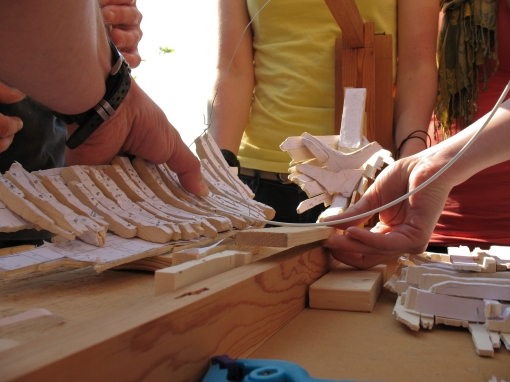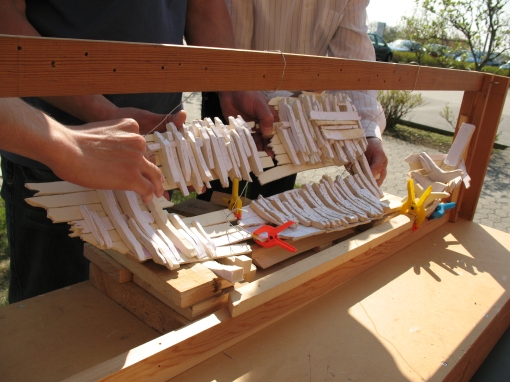Halfway through our modeling course we made a first attempt to join the five different hull sections of the Princes Channel Wreck. On the one hand we wanted to establish the “missing link” between the bow and the hull of our ship and on the other hand we hoped to get a first idea about the size of the ship.

Assembling the Princes Channel wreck
We mounted the bow section on a large wooden frame and then assembled the remainder of the hull using temporary fixings such as wire and chocks. Thin plastic splines were used to control curvature and assure fair lines. Although this was our first attempt, which involved a lot of improvisation, we got a first idea about the size of the Princes Channel Wreck or Gresham Ship. it looks as if we are dealing with a merchant vessel of at least 25m length at the level of the lowest (and possibly only) continuous deck.

All sections joined
As a next step we’re going to build a larger reconstruction frame and attempt a more permanent reconstruction which will also allow taking off a first set of lines. At the same time the working groups have started to work on larger 1:10 scale wooden models in order to reconstruct the construction sequence of the Princes Channel Wreck.
Jens Auer
Assistant Professor
Maritime Archaeology Programme






